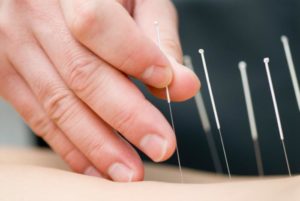 Study leader Angela Johnson, practitioner of Chinese medicine at Rush University Medical Center in Chicago, IL, and colleagues publish their findings in the journal Alternative and Complementary Therapies.
Study leader Angela Johnson, practitioner of Chinese medicine at Rush University Medical Center in Chicago, IL, and colleagues publish their findings in the journal Alternative and Complementary Therapies.
Chronic pain is defined as any pain that lasts at least 12 weeks. It is estimated that around 20-35% of children and teenagers across the globe have chronic pain.
Treating adults with chronic pain has its difficulties, but treating children with the condition is even more challenging; there is little evidence on effective drug therapies for chronic pain in children, and health professionals are often wary of providing certain treatments to youngsters because of their vulnerability during growth and the fear of possible long-term health implications.
“Effective treatment of pain can be particularly difficult because it’s subjective; but with children, it is increasingly difficult because a child may not be able to communicate effectively depending on the age and accurate recognition of pain,” adds Johnson.
As such, the search is on to identify safe and effective therapies for chronic pain in children, and with this latest study, Johnson and her team may have found one: acupuncture.
Acupuncture is a practice used in traditional Chinese medicine, which involves stimulating certain pressure points on the body, most commonly with the insertion of thin needles through the skin.
While acupuncture is considered an effective treatment for chronic pain in adults, there is little information on whether the procedure may be an effective form of pain relief for children.
“This study looked at the effect of acupuncture in children directly, rather than examining data collected from adults,” says Johnson. “This focus is especially important, since children experience pain in different ways than adults.”
Acupuncture reduced pain, improved quality of life
Johnson and colleagues enrolled 55 children and adolescents aged 7-20 years to their study, all of whom had chronic pain conditions.
Each participant attended eight sessions in which they received an individually tailored acupuncture treatment, with each treatment lasting around 30 minutes.
Using the Adolescent Pediatric Pain Tool (APPT), participants rated their pain and nausea before and after each treatment. The APPT asks patients to disclose pain areas through a body outline diagram and describe pain intensity through circling words such as “no pain” and “worst possible pain.”
The researchers found that participants reported a significant reduction in pain throughout the entire eight sessions and from the beginning to end of each individual session, with greater pain reduction reported in the earlier sessions.
What is more, through the completion of the Pediatric Quality of Life Inventory, the researchers found patients experienced improvements in overall health and reductions in social, emotional and educational problems.
MNT DT






